Recommended tours
Review & Earn Travel Money
At TripsPoint you have endless possibilities to earn TripsPoint Money - this is your Travel Money your can use to book you next tours and activities everywhere you go.
Here's Space For Everyone
New tours
We stand together! Support Ukraine against Russian aggression!

Find and read unique Travel Guides to travel destinations around
the world - plan your amazing trips with advise from local travel experts.
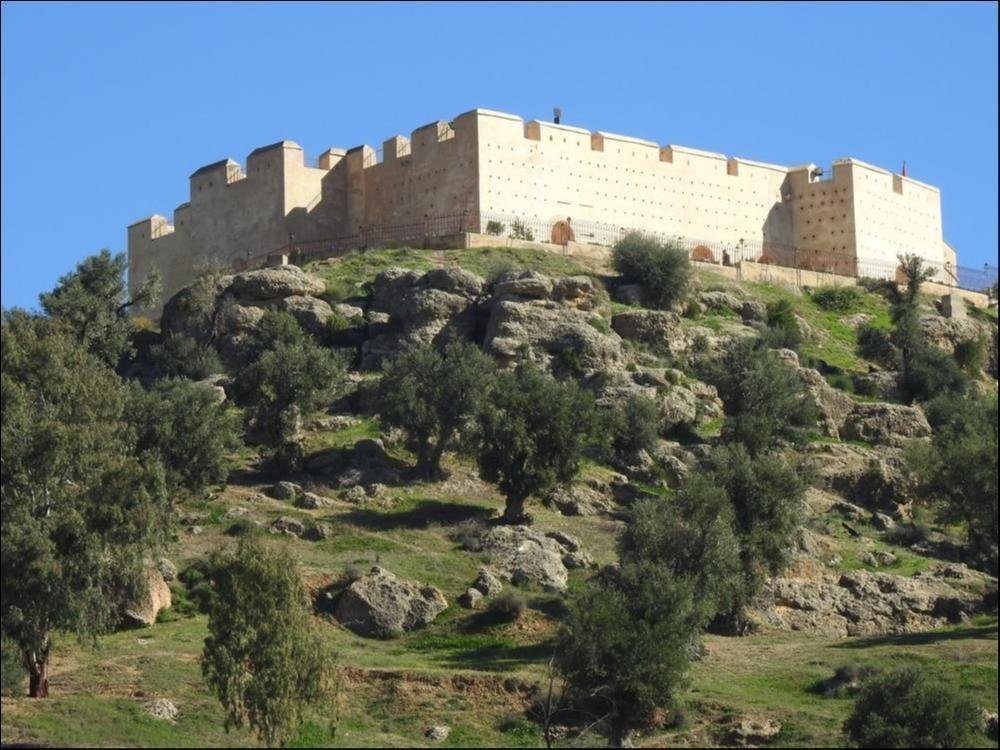
Fes Morocco Travel guide
Fes Morocco Travel guides all you have to know before visit Fes Morocco, a travel guide for all attractions and spots in the Medina of Fes, while you visit Morocco if you miss Fes your Morocco tour considered incomplete, similarly to not visit Merzouga Sahara desert or Marrakech.
Fez was Morocco’s capital until 1912 and is still considered the country’s spiritual and cultural center. Over 1,200 years old, it is full of palaces, museums, mosques, fountains, habitations, and tiny small alleyways. Fez and its medina is plenty on the senses. you will enjoy visiting Fez: the chaos, the smells, the deals, markets, and food stalls. They can be very unusual and psychologically exhausting but there were beauty and charm. It made you feel like you moved back in time as a local explorer, not just a tourist. the medina’s labyrinth design can be fun to get lost and try to find your way on the small narrow 9000 streets.
This travel guide is about What is there to do in Fez?
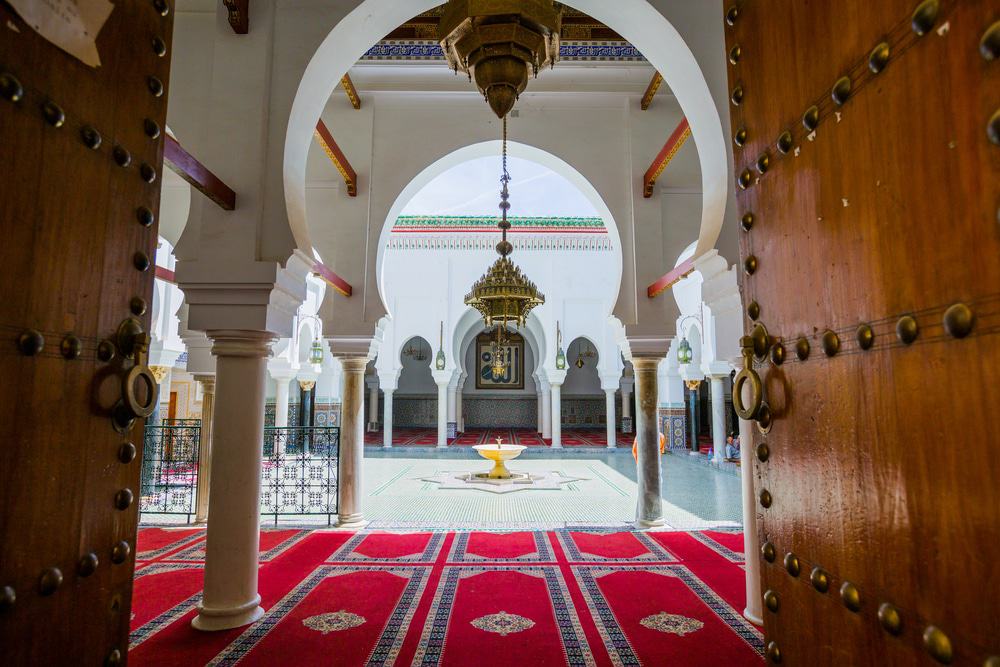
The Zaouia Moulay Idriss II is a “zaouia” (a shrine and religious complex; also spelled “zawiya”) committed to and containing the tomb of Idris II, who ruled Morocco from 807 to 828 and is considered the main founder of the city of Fes and of the first Moroccan Islamic state.In the year 1308, nearly five centuries since the death of Moulay Idriss II, an uncorrupted body was found on the spot. People believed this was Moulay Idriss II and founded the zaouia. First built by the Marinids circa 1440, over the centuries the building was amended profoundly, and almost completely restored in the 18th century by Moulay Ismail in a style typical of the Alaouites that govern Morocco to this day. Moulay Idriss II is the patron saint of the city of Fes, and it is assumed that walking through his zaouia is useful for strangers visiting the city, boys before being circumcised, and women desiring to facilitate childbirth.
Know Before You Go: Unless you’re a Muslim, you can’t go in – but you can peek through the door and admire the tile work and carvings on the outside (check out the side as well as the front, as you can see surprisingly quite a lot of the building through the different entrances.).
Opening Hours: Daily: 8am-12pm / 2-6pm
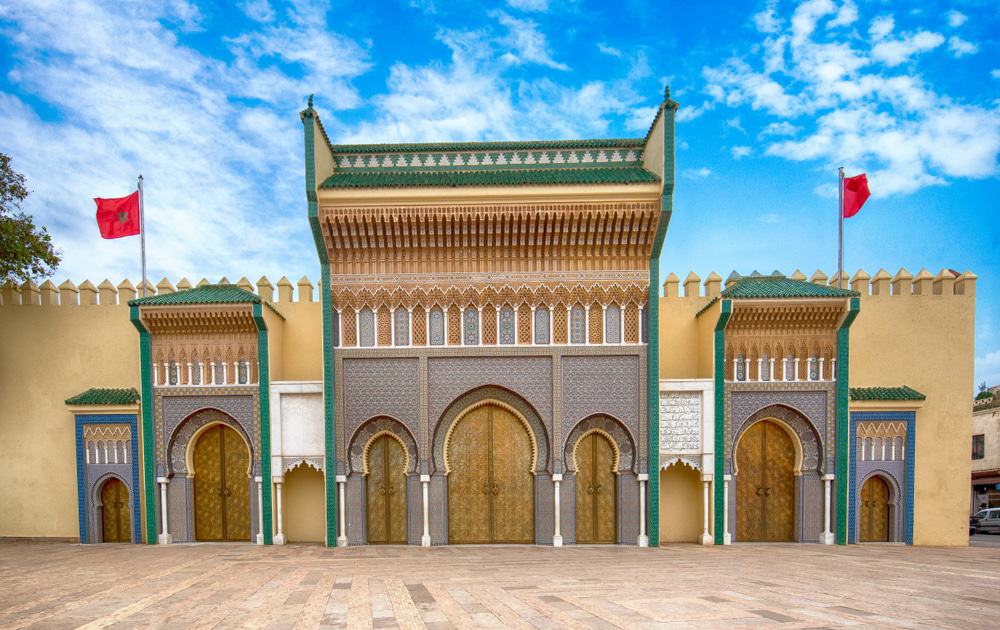
Fes Morocco Travel guide
While the Royal Palace (Dar al-Makhzen) is not admissible to visitors, the doors are a fabulous photo stop and are deserving of checking out. It’s placed in Fes el-Jdid and was built in the 13th century. The palace doors are so intricately decorated and are a brilliant pattern of Moroccan design.
Know Before You Go: Palais Royal Dar El Makhzen is not open to visitors but it has a beautiful 7 bronze doors to take amaizing photos.
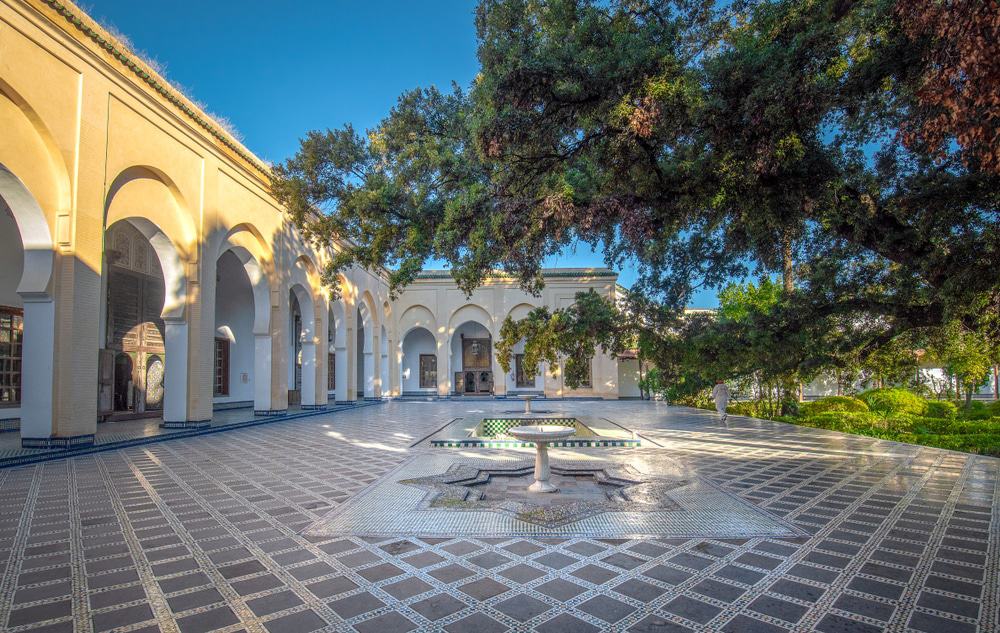
Fes Morocco Travel guide
Located in the heart of the Medina of Fez. Transformed into a museum in 1915, it is now home to a fine collection of some 6,000 pieces ranging from traditional Moroccan tiles to carpets and astrolabes. Dar Batha was selected during the reign of Hassan I, the sultan of Morocco from 1873 to 1894. Built-in the Arab-Andalusian style, with a calm garden and fine decorations, it served as a place for the sultan to entertain guests, a function it maintained during the following reign of Hassan I’s son, Abdelaziz From 1912 to 1915, Dar Batha was conquered by representatives of the French Protectorate. When they moved their accommodations to Rabat, Dar Batha was converted into a museum. Started in 1915, it became the first museum in Morocco, originally as a museum of national art. Today, Dar Batha houses a magnificent collection of Moroccan art, craftsmanship, and historic artifacts. Among these pieces are fine examples of Moroccan woodcarving, traditional zellige tilework, and sculpted plasterwork known as tadelakt, much of it brought from the city’s crumbling madrasas. You’ll also see Berber carpets, Fassi embroidery, old coins, antique instruments, and a room full of astrolabes, old scientific tools used to identify celestial bodies and to determine latitude and time. Arguably the most important and impressive exhibit is the museum’s collection of ceramics, which includes examples of the famous blue pottery of Fez. This style of pottery was first produced by artisans in Fez in the 10th century, who used a cobalt glaze to give their ceramics intricate blue patterns, a traditional style now known as Fez Blue.
Know Before You Go: Dar Batha is located along Rue de la Musée, not far from the Bab Boujeloud, the ornate city gate that is known as the main western entrance to Fes el Bali (the oldest walled part of Fez). The museum and grounds are open every day apart from Tuesday from 9 a.m. to 5 p.m. The entrance fee is 20 dirhams (about $2 USD). More than half of the palace grounds are taken up by the Andalusian-style gardens, which offer a peaceful respite from the busy medina outside, and the chance to drink some tea and try some traditional sweets.
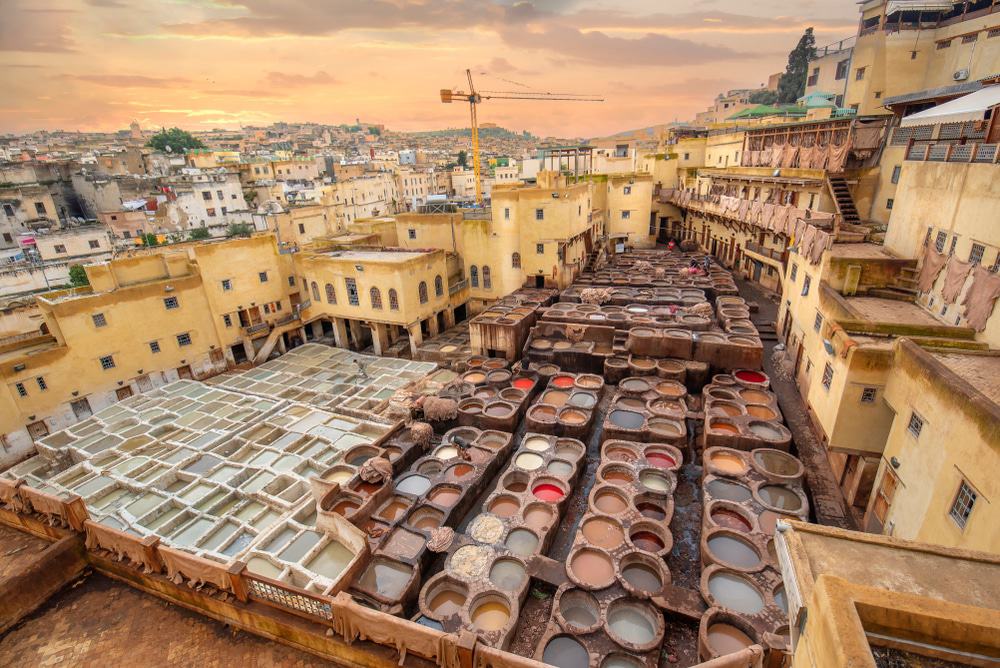
Fes Morocco Travel guide
In the tanneries Chouara, animal hides are prepared the old-fashioned way: soaked in limestone vats of pigeon poop and donkey urine, hand/foot-beaten to a pulp and colored with all-natural dyes. The yellow leather dyed with saffron is considered the most valued and is traditionally used to make pointy-toed slippers called babouche. It should be noted that smell is not for the weak of stomach, so it’s best to accept the sprigs of mint offered at the door before taking in the sights.
Know Before You Go Follow your nose.
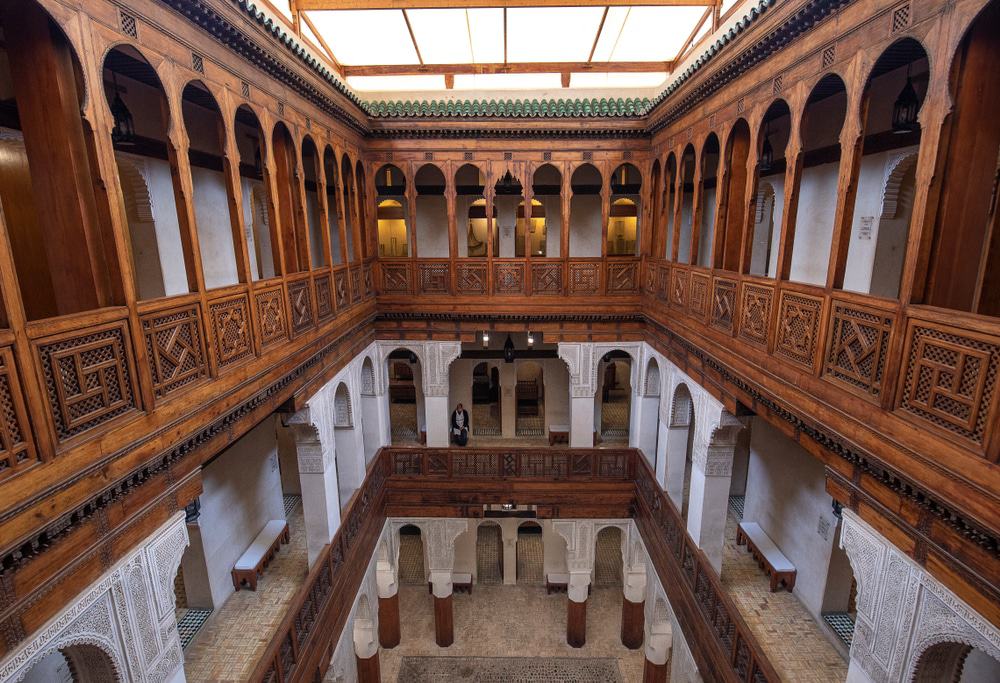
Fes Morocco Travel guide
The antique Medina of Fez in Morocco is a real treasure chest of history and culture with many worthy attractions highlighting the valuable traditions of Moroccan people. One of these attractions is Fondouk el-Nejjarine, which is home to the Museum of Wooden Arts and Crafts, or Musée du Bois, located near the Henna Souk area of Fez el-Bali. As the name suggests, this museum showcases the skill of woodcarvers and artists both in the decorations of the building and the intricately decorated items on display. Understanding the need to protect this ancient craft and expose it to both local and international visitors, Fondouk el-Nejjarine was declared a national monument in 1916 and supported extensive restoration work in 1988. Fondouk el-Nejjarine was first built in the 18th century as a caravanserai (roadside inn) in Fez where travelers could rest before continuing their journey. These buildings, which are found throughout Morocco, were typically built in a square or rectangular shape around an internal courtyard, usually with a fountain in the middle forming an oasis from the Moroccan heat. Fondouk el-Nejjarine follows this style, with the two upper floors featuring beautifully carved wooden arches and railings from which visitors can look down upon the courtyard. While moving ahead with the times, Morocco has managed to hold on to its old-age traditions and crafts, such as Tadelakt, woodwork, and woodcarving. Different types of timber are used in Moroccan woodcarving, including oak, mahogany, acacia, and cedar, with the latter being one of the most popular, most likely due to its availability in Morocco, especially in the Middle Atlas regions, but also because of its durability, warm shades of color and its texture which is particularly suited to carving. The woodwork in Moroccan architecture is both a form of artistic composition, as well as being an aspect of Islamic culture and tradition readily acknowledged in many North African countries. This ancient skill has been passed down through ages and is still going mighty, especially in the cities of Marrakech, Tetouan, Essaouira, Meknes, and Fez. Visitors traveling the Medina of Fez will come across artists practicing this ancient art-form as they carve items that are often for practical use, as well as being beautiful. A visit to Fondouk el-Nejjarine should be on your itinerary when you visit Fez, as it is a superb example of a unique and beautiful traditional Moroccan craft.
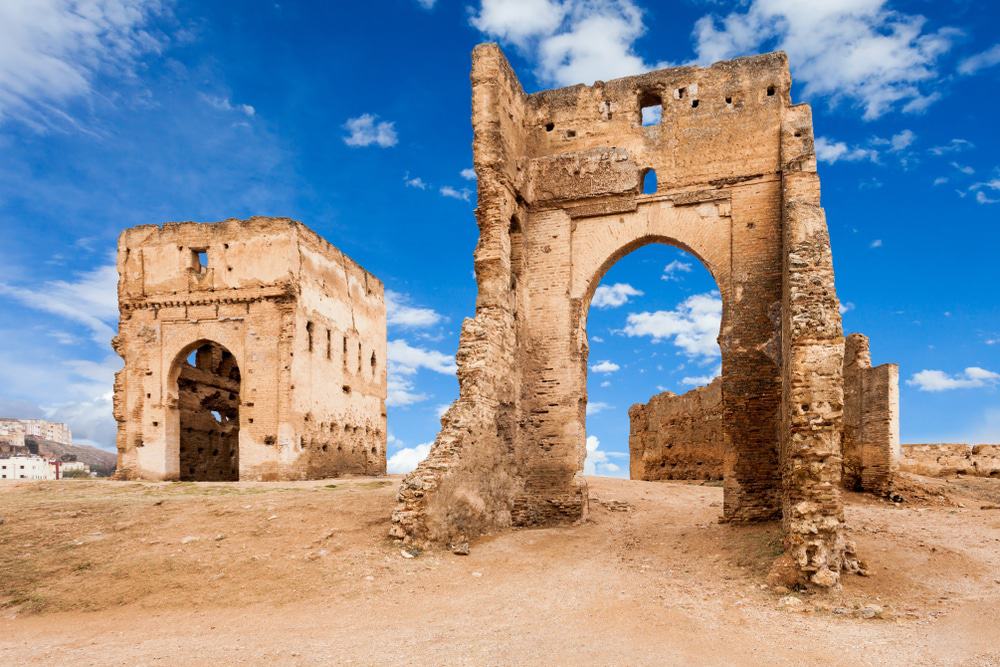
Fes Morocco Travel guide
The best panoramic view of the Fez Medina is the skeletal remains of the Merenid Tombs. Built-in the 14th century, the tombs were once the impressive resting places of the Merenids’ finest, but after years at the mercy of conquests and looters, they lack most of their original decorative charm. What the remaining tombs lack in aesthetics, though, the view makes up for. Below, the whole of the Fez Medina stretches out to the East in a patchwork of minarets, laundry lines, satellites, and the occasional garbage fire. Carved into the hills are man-made caves that serve as dwellings for some of Fez’s less fortunate. The amount of empty beer cans lying around is a good clue-in as to what the late-night atmosphere is like, and any local will tell you the tombs are a well-known mugging ground for “gauries” (“honkies” in colloquial Moroccan). Directly below the tombs on either side of the cliff are two large graveyards that are used as grazing grounds for local shepherds. Unfortunately, the area is rife with trash, but there are also plenty of animal bones lying around to complement the spookiness.
Know Before You Go Easily visible, it’s a 15-minute walk and next to Hotel Les Merenides.
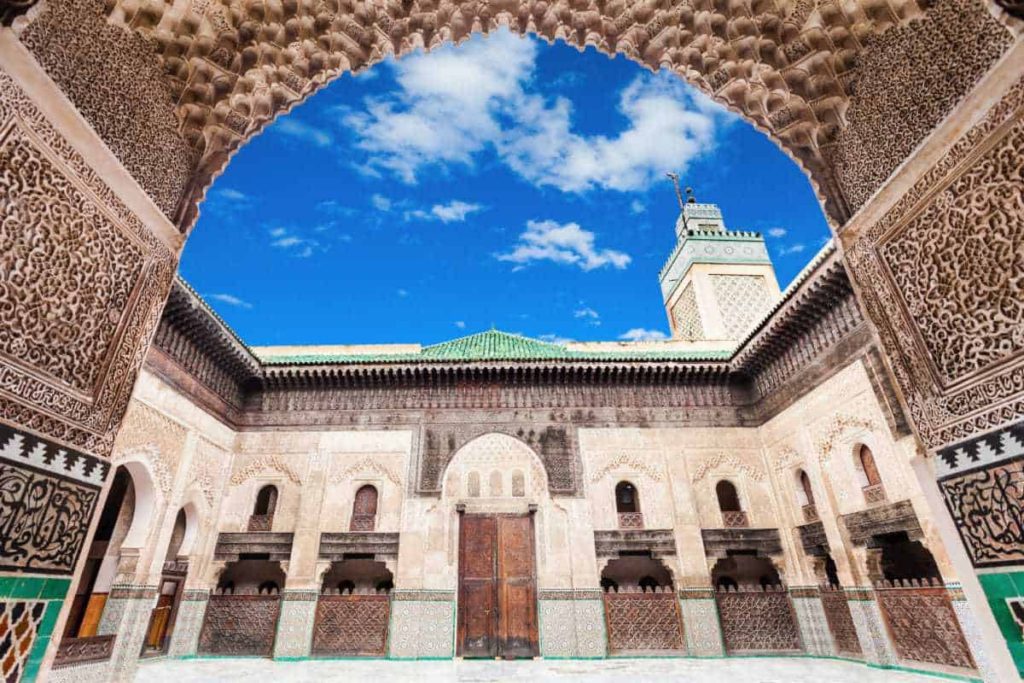
Fes Morocco Travel guide
Founded in 1351–56 AD by Abu Inan Faris, who also founded the Bou Inania Madrasa in Meknes, this madrasa is widely acknowledged as an excellent example of Marinid architecture. The name “Bou Inania” comes from the first part of the sultan’s name “Abou Inan”. The madrasa functioned both as an educational institute and as a congregational mosque. This is the only madrasa in Fes with a minaret. Opposite the main doorway of the madrasa is the entrance to the dar al-wudu (ablutions house). Left and right of the central court there are classrooms. According to history, religious leaders of the Karaouine Mosque advised Abu Inan Faris to build this madrasa. It was the last madrasa to be built by the Marinids. The madrasa became one of the most important religious institutions of Fes and Morocco and gained the status of the Grand Mosque. The madrasa was renovated in the 18th century. During the reign of Sultan Mulay Sliman, entire sections were reconstructed. In the 20th century, major restoration work was performed on the load-bearing structure, the plaster, wood, and tiled decorations with Islamic geometric patterns. The madrasa is one of the few religious places in Morocco that is accessible for non-Islamic visitors. Opposite the Madrasa Bou Inania is the Dar al-Magana, a wall with a hydraulic clock that was built in conjunction with the madrasa.
Know Before You Go: To see the result of the period when Moorish architecture, art, math, medicine, philosophy, etc., were the highest quality in the world (in about the 14th century). While the tour itself doesn’t take long to walk through, the courtyard is very beautiful with intricate wood carvings and colourful tile work that should definitely not be missed. Opening Hours: Sat-Wed: 9 am-5 pm; closed during prayers
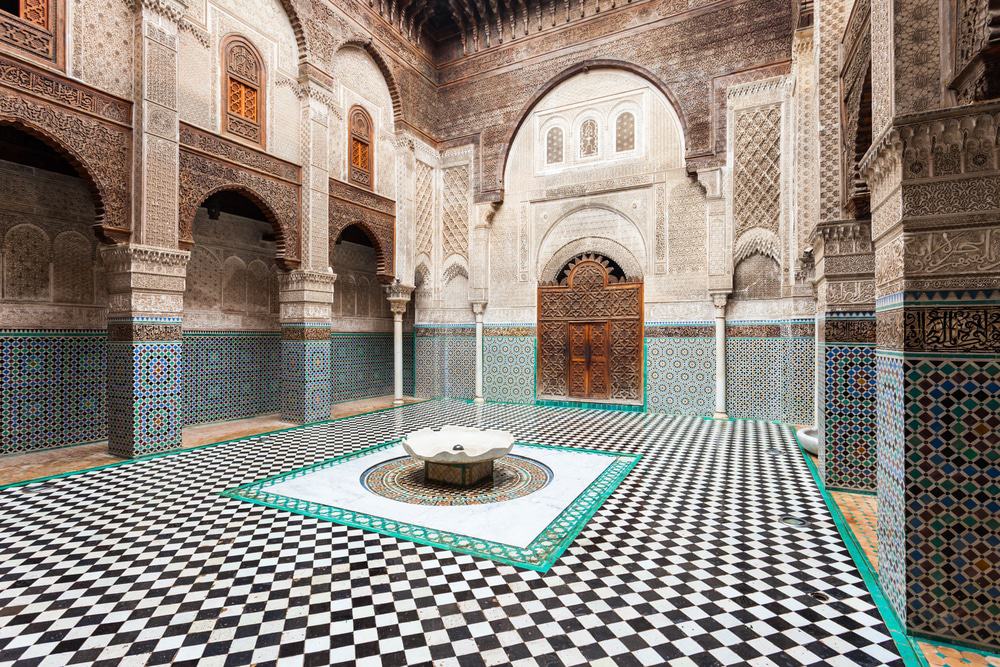
Fes Morocco Travel guide
BUILT-IN THE 14TH CENTURY, the al-Attarine Madrasa stands at the entrance of a spice and perfume market in the spiritual center of Fez, the second-largest city in Morocco. The highlight of the small madrasa is its courtyard, its floors, and walls exquisitely decorated in the traditional patterns of Marinid craftsmanship. The sultans of the Marinid Dynasty, which ruled Morocco from the 13th to the 15th century, were known as passionate patrons of madrasas, centers of religious learning that helped them promote Sunni teachings during their various reigns. The al-Attarine Madrasa was built by the Marandi sultan Abu Sa’id Uthman II between 1323 and 1325. Before completing al-Attarine, Abu Sa’id, known as a pious ruler who preferred peace to war, had already commissioned two important madrasas in Fez, the Fez al-Jedid and Es-Sahrij. The al-Attarine Madrasa, whose name means “the madrasa of the perfumers,” takes its name from its location at the entrance to a historic spice and perfume market in Fez. But unlike the busy souk that it borders, the al-Attarine Madrasa is a place of unusual calm. At the heart of the madrasa is an exquisitely ornamented rectangular courtyard that opens onto a square prayer hall. Around these are the student accommodations, simple rooms that contrast greatly to the arcaded courtyard and prayer hall, which provide the main attraction for visiting tourists. The courtyard is one of the finest examples of Marinid craftsmanship in Fez. The walls are decorated with carved stucco ornamentation, sections of Arabic calligraphy, and intricate zellige mosaic tiles forming colorful geometric patterns. Marble columns rise up from the floor holding elaborately carved wooden arches and cornices, the delicacy and detail of which almost defies belief. The floor is also covered in tiles, albeit far simpler than those decorating the walls, whose geometric patterns are considered too sacred to be stepped upon.
Know Before You Go: The al-Attarine Madrasa is located along Rue Talaa Kebira in the Fez Medina, not far from the Kairaouine Mosque and University. Opening hours are from 8 a.m. to 6 p.m. daily but check in advance in case any religious events are taking place, which could change the hours of public access. The entrance fee is 20 dirhams, or about $2 USD for an individual or 15 dirhams per person in groups of 10 or more.
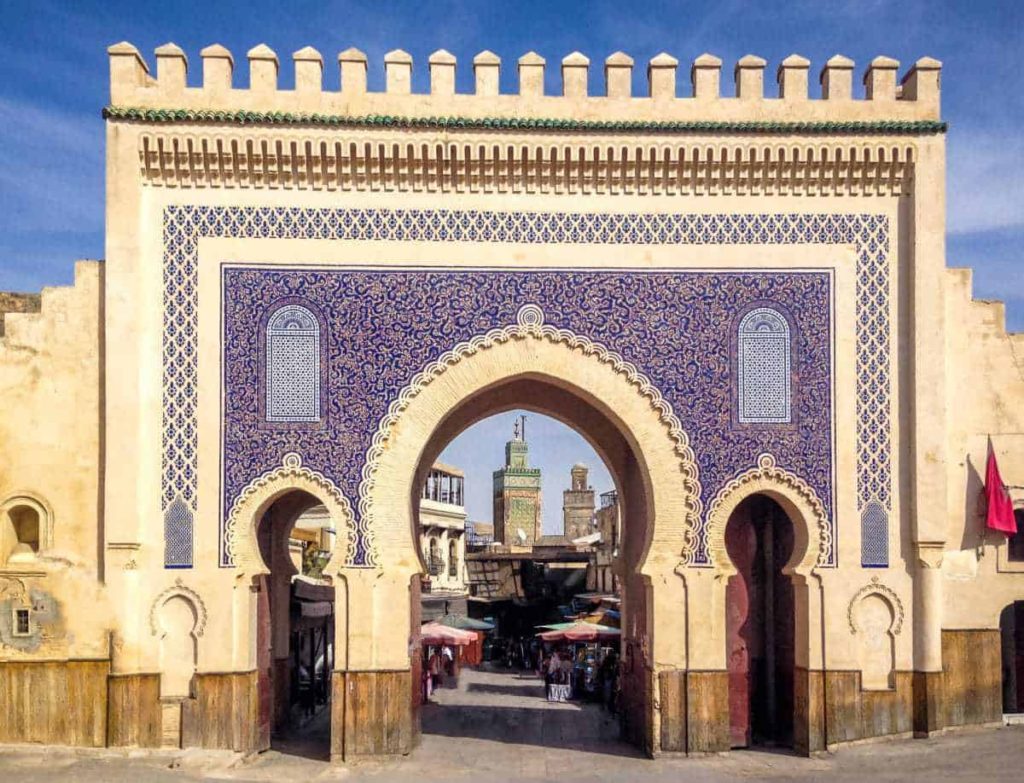
Fes Morocco Travel guide
If you are touring Morocco and arrive at Fes, you’ll immediately recognize the Grande Porte Bab Boujeloud, also known as “The Blue Gate of Fes.” If you exit through the Bab Boujloud, however, you’ll note that its other side is actually green. The towering entryway with its mosaic tiles is the most iconic portal to the old medina, Fes el-Bali, the world’s largest surviving medieval city, and urban car-free zone. The blue on the side that greets new visitors represents the color of the city of Fes, which is famous for its pottery, painted with elegant cobalt blue designs. The reverse side, which faces the medina, is green—the color of Islam. Built-in 1913, the bab (gate) is a doorway between two equally colorful and dynamic scenes, one that feels distinctly 21st century, and the other an intriguing mix of different eras. Once you pass through “The Blue Gate,” the thrum of traffic will quickly fade, replaced by the din of shopkeepers selling their wares and the muffled footsteps of thousands of animals and pedestrians making their way through the winding alleyways. From the Bab Boujeloud entrance, you’ll come upon the two main alleyways into the medina, the Tala’a Kbira, and Tala’a Sghira—though whichever you take, you’ll probably get lost.
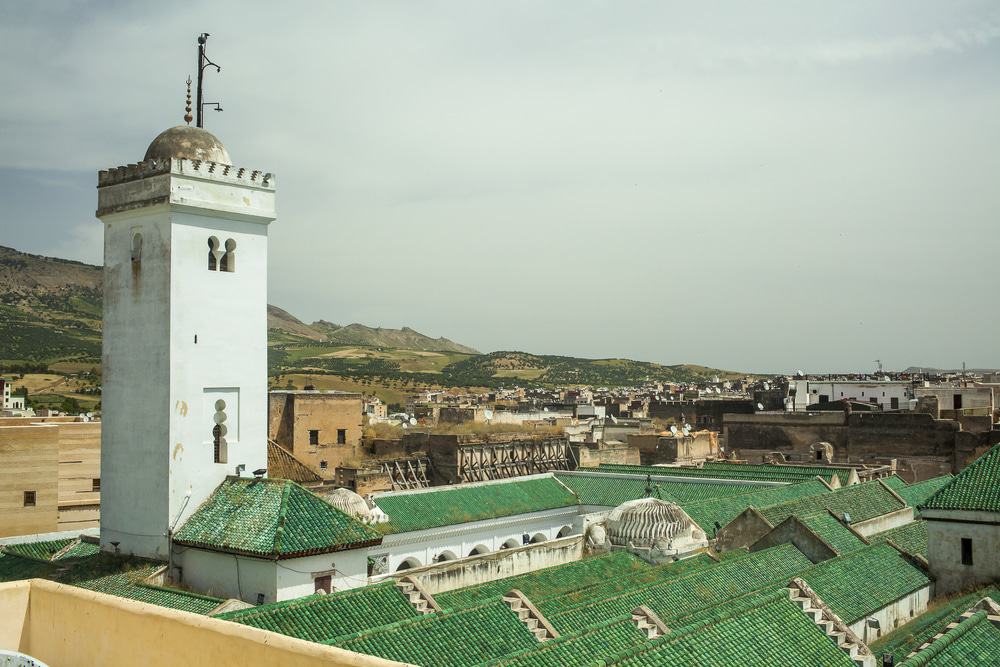
Fes Morocco Travel guide
THE UNIVERSITY OF AL-KARAOUINE, ALSO written as al-Quaraouiyine and al-Qarawiyyin, is considered by the Guinness World Records as well as UNESCO as the oldest continuously operating, the degree-granting university in the world. You’ll find it tucked within the winding alleyways of Fes el-Bali, Morocco, one of the world’s most ancient living cities. Wandering around Al-Karaouine today, you can admire the institution’s simple yet beautiful design, decorated with Andalusian art bordered with Kufic calligraphy. The university library is home to a number of precious manuscripts including historic copies of the Qu’ran.In the year 859, Fatima al-Fihri used her inheritance to fund the construction of a mosque for her community with an associated school, known as a madrasa. Her intention was to give back to the community that had welcomed her family. They immigrated when she was young from the Tunisian city of Kairouan (the namesake of the mosque and university). The mosque was the initial focal point; with enough room for 22,000 worshipers, it remains the largest in Africa. Both women and men can attend university, in recent years the female student body has grown as the culture’s value of education has increased. It is a common misconception that the university only allows male students to attend Over the centuries, the University of Al-Karaouine became a key spiritual and educational center in the Muslim world. In the beginning, the madrasa focused on religious instruction and Qu’ran memorization, but later expanded into Arabic grammar, music, Sufism, medicine, and astronomy. However, it was not until 1947 that the school was integrated into the state education system; in 1957 physics, chemistry, and foreign languages were introduced; in 1963 it joined the modern state university system, and in 1965 it was officially renamed “University of al-Karaouine” rather than simply “al-Karaouine.” The school’s student body shrank dramatically in the early 1900s when elites began sending their children to the new Western-style institutes in Morocco. Much of the university is still highly traditional, from the student demographics to the style of instruction. Students, who range between the ages of 13 and 30, seat themselves in semi-circles (halqa) around a sheik when reading texts. They can work towards high school-level diplomas or university degrees, and before they arrive at Al-Karaouine, they must have memorized the entire Qu’ran as well as several shorter texts. Students come from different parts of Morocco and Islamic West Africa, and even Muslim Central Asia. The University of Al-Karaouine reminds us that it is not Oxford or Cambridge that first set the stage for university learning, but a mosque’s madrasa that, over 1,000 years ago, set those gears in motion.
Know Before You Go: The university doubles as a functioning mosque and non-Muslim visitors are not allowed inside the grounds. The main gates and some other entrances are open and may be looked into, but not entered
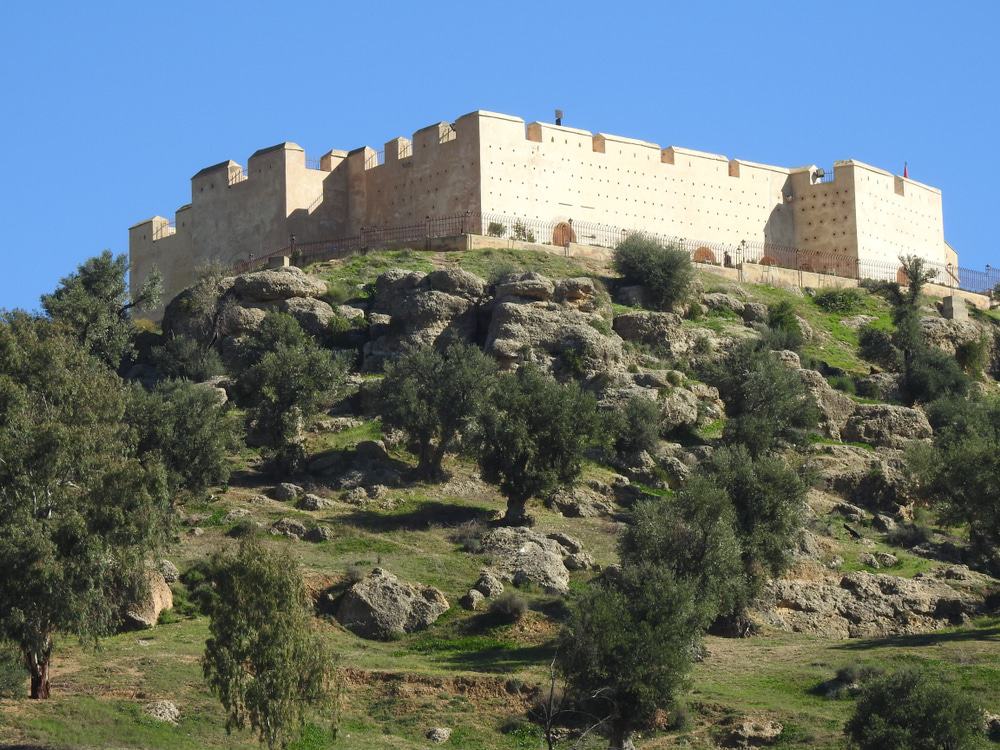
Fes Morocco Travel guide
Borj Nord Arms Museum, a fortress built in 1582 at the behest of Saadian Sultan Ahmed El Mansour Eddahbi.The Borj Nord was built during the Saadi dynasty in the late 16th century to keep a prepared eye over the Moroccan city of Fes. This palatial structure was converted into an armory museum in 2016, and today, it exhibits some 5,000 weapons, from a 12-ton cannon used in the infamous mid-16th century Battle of Three Kings to the nearly 800 military items in the museum’s collection and archival photography. Thirteen rooms inside the Borj Nord Arms Museum represent an expanse of a historic armory, much of which was committed by royalty and includes rare artifacts from Morocco and around the world. Even if spectacular weaponry isn’t your beat, the museum is well worth a visit for capturing views of the Fes Medina from the beautiful Merenid Tombs. Across the valley, the fortress of Borj Sud—the southern counterpart of the Borj Nord serves as an imposing military monument.
Know Before You Go: The Borj Nord Arms Museum is open from Tuesday through Sunday from 9 am until noon, and 2 pm until 6 pm.
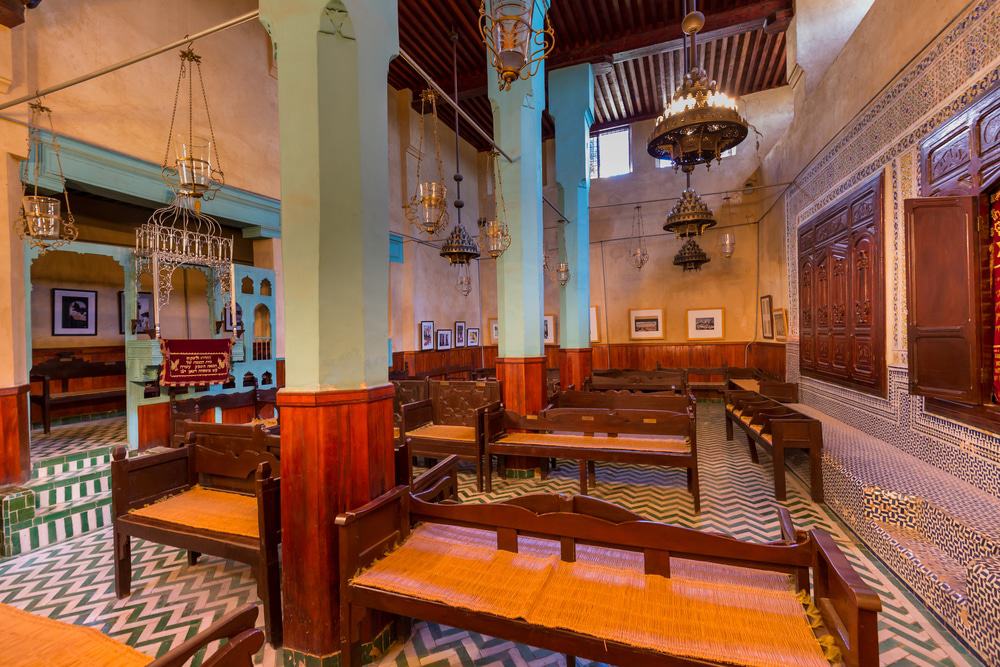
Fes Morocco Travel guide
placed in Fes El Jadid El Mallah Morocco’s first designated Jewish quarter formed in 1438, Ibn Danan is one of the region’s oldest synagogues. Built-in the 1600s by a famous Moroccan Jewish family, the synagogue is among the last surviving buildings in this historic part of the city. The Ibn Danan synagogue was built by the wealthy Ibn Danan family in the 17th century when the Jewish quarter constituted a thriving region of the city. Highlighting traditional Moroccan and Islamic design points, the synagogue boasted spectacular tiles, stucco, and arched doorways. An important restoration began in 1996 to strengthen and restore the synagogue, which had fallen into an alarming state of disrepair following World War II, despite the endeavors of neighboring Jewish communities to preserve it for its religious, cultural, and historical significance. Peeling plaster, a caving roof, rotting beams, and broken windows were finally conserved by the World Monuments Fund in collaboration with the Moroccan Ministry of Culture, and the Judeo-Moroccan Cultural Heritage Foundation in partnership with the local community. By 1999, the synagogue reopened to the public. Today, Ibn Danan is thought to be the only complete Moroccan synagogue in existence, with wooden benches, oil lamps, embroidered tapestries, and the real gazelle skin Torah scrolls adorning the building’s interior.
Know Before You Go: The synagogue is centrally located in the mellah. It’s recommended that visitors find a trusted guide for a tour of the building.
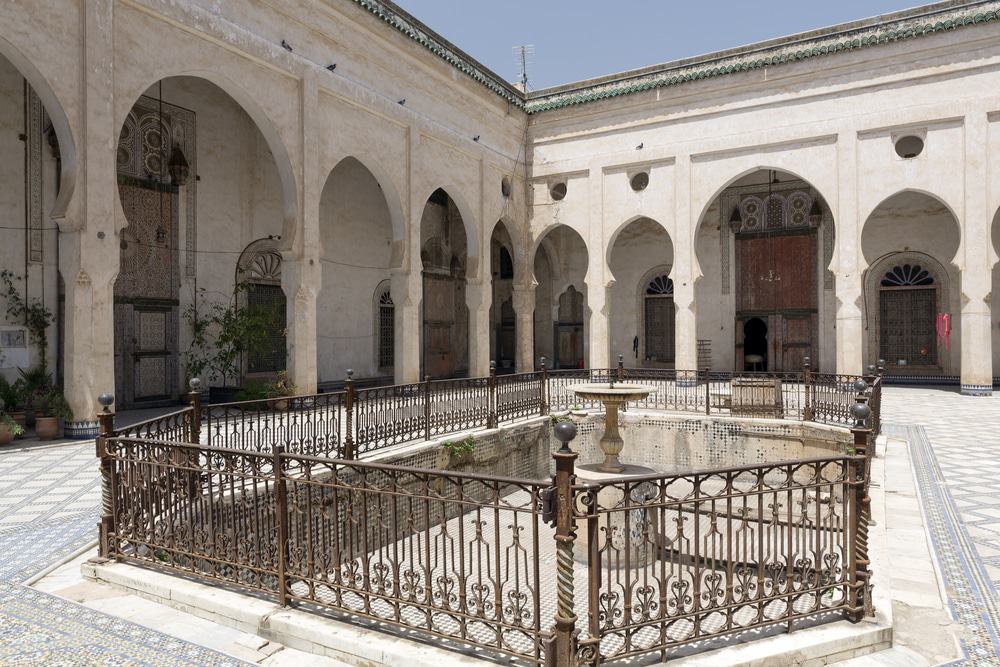
Fes Morocco Travel guide
The medina of Fes is not full of crowded lanes and tourist spots; hidden in its complex web is a spot that is a peaceful retreat from the heat and noise of the city. The place is where the last ruler of Fes, Thami El Glaoui, lived. Named after his family, the palace was the center of power till the death of Thami El Glaoui. The most notable thing about this palace is its courtyard. In the center of this courtyard is a gorgeous marble fountain with a pool to collect the water. This system would provide a cool relief during the hot seasons in Fes. The rooms are attractively decorated with motifs and the European influence can be clearly seen on the arched walls. The architecture is not grand, but it still gives the feel of royal presence in its rooms. Today, most of the grandeur is in very bad shape, but it is not dilapidated. You can still picture the days of glory during Glaoui’s rule without any difficulty. Know Before You Go: You may have to search the palace as it is not a mainstream tourist spot. On the other hand, no crowds! The palace has not been maintained properly. Be careful when roaming about.
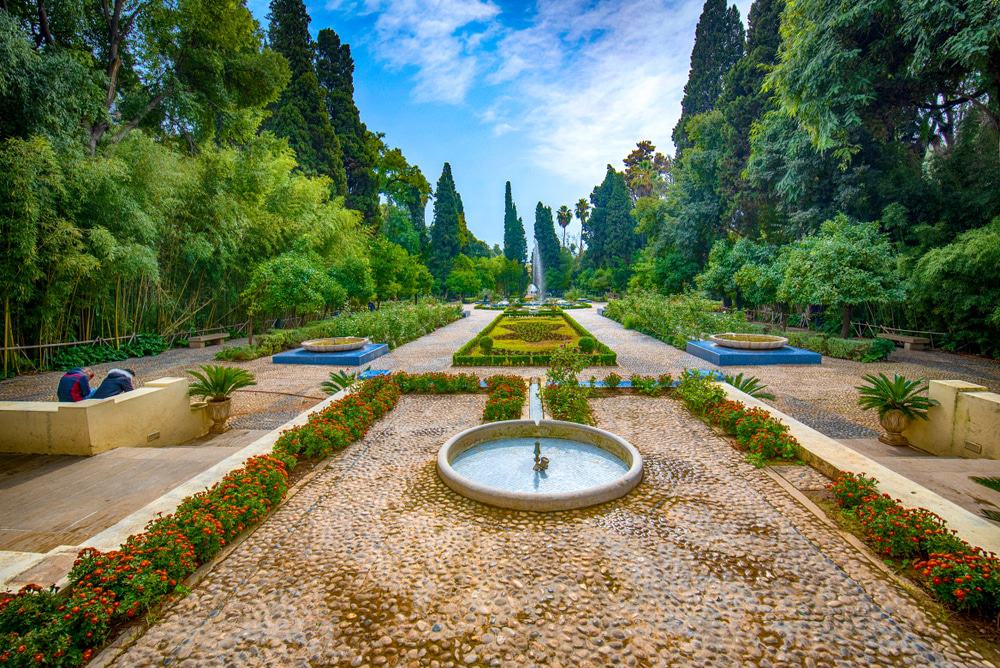
Fes Morocco Travel guide
Fes is not just about crowded old markets and houses. Just outside the walled city is the garden of Jardin jnan Sbil. Spread over an area of 8 hectares, the garden resembles a calm, peaceful oasis in the middle of the desert. Just off the busy streets of main town Fes, you can experience complete peace and tranquillity in this lush garden. it is developed in the Andalusian tradition that gave rise to flourishing gardens despite the threatening heat. Therefore, the Jardin Jnan Sbil is cool even in the hottest parts of the day. Some of the trees in this garden have been imported from China and India. You can spend an entire day sightseeing in the busy medina and come here in the evening to relax. Know Before You Go: The garden may be crowded in the evening
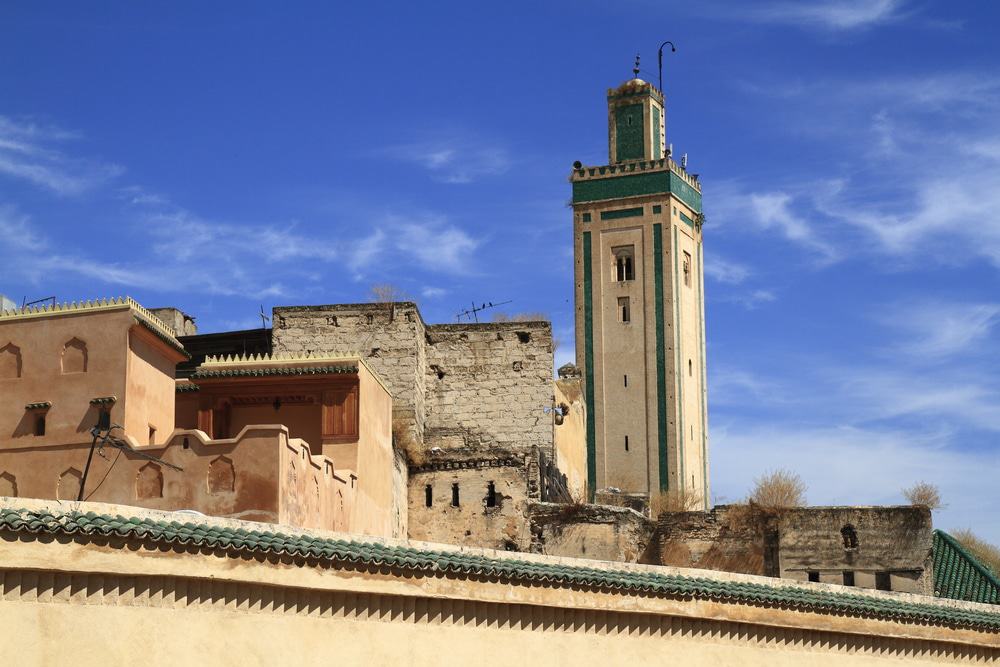
Fes Morocco Travel guide
Built-in 859-860 under the reign of Idrisside dynasty in the heart of the district, to which it gave its name (the Andalusian district) by El Fihriya Meryem, sister of Fatima El Fihriya, founder of the Al Quaraouyine, mosque Andalusians was originally a modest oratory, a Muslim place of worship, before the subject of several transformations. Over the centuries, the different dynasties that succeeded on the throne of the kingdom undertook several restoration and beautification of the mosque. Thus in 956, it was with a minaret in the image of that of the Al Quaraouyine, which remains his eternal rival. At the Almohad time, the Andalusian mosque was almost entirely rebuilt. Thereafter, the Merinids are aménagèrent among others, a fountain in the inner courtyard and a library. With the arrival of Alaouis, Moulay Ismail undertook extensive renovations. Know Before You Go: The Andalusian mosque is accessible via the famous tanneries or by Bab Ftouh.
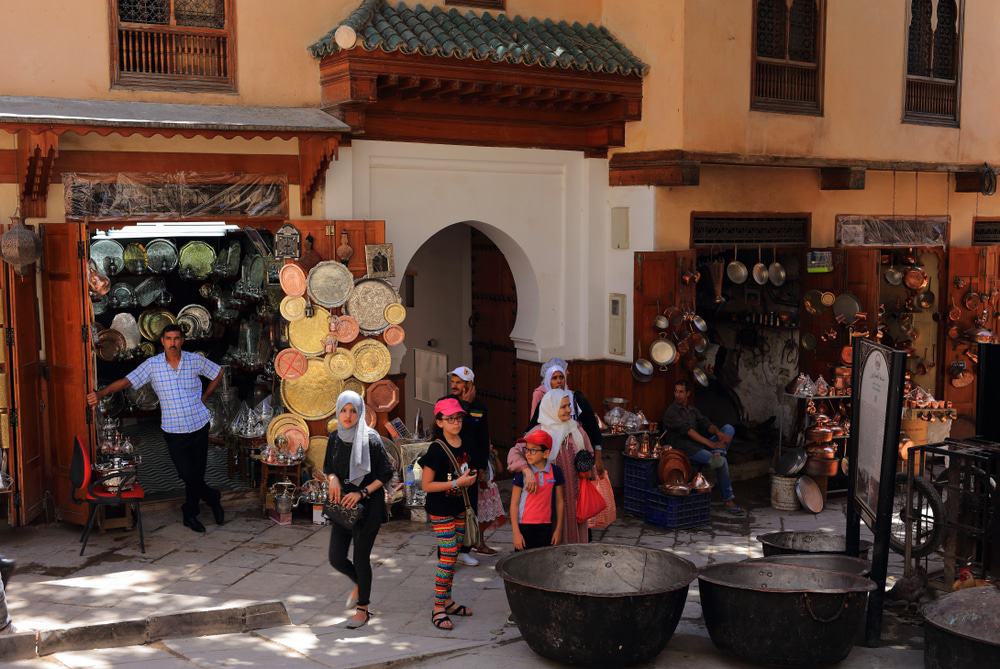
Fes Morocco Travel guide
The plaza of Place Seffarine, dominated by the entrance to the al-Qarawiyin Library and a sturdy old tree, is one of the most charming areas in Fes. As you approach, you’ll hear the sound of the copper beaters tap, tap, tapping away. It’s well worth perusing the stalls to find high-quality cookware to take home, such as pixie pans for boiling milk for your coffee, copper tagines and teapots, and prettily etched bowls for use in the hammam. Stop at the café for seriously strong coffee and to watch the world go by, or scoot around the corner onto Derb Chouara for hot, sweet mint tea spiked with various other healing herbs at a hole-in-the-wall where you’ll rub shoulders with local craftspeople taking a break from their labors.
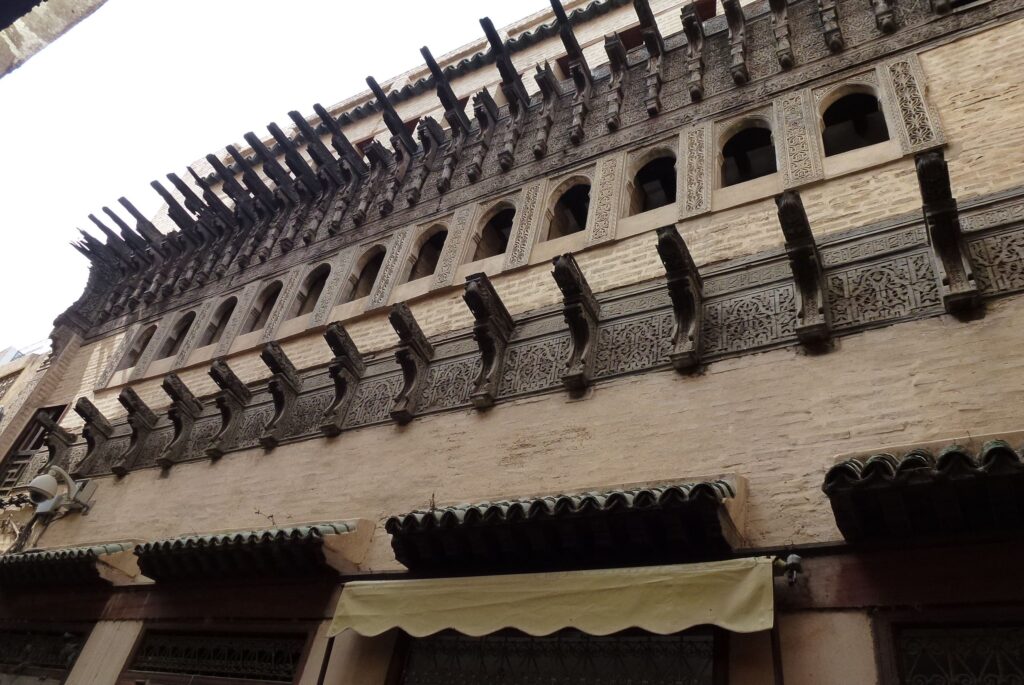
Fes Morocco Travel guide
Dar al-Magana (Arabic for “clock house”) is a house in Fes, Morocco, built by the Marinid Sultan Abu Inan Faris which holds a weight-powered water clock. The muwaqqit Abou al-Hassan Ibn Ali Ahmed Tlemsani was responsible for building the clock, which was finished on 6 May 1357. The Dar al-Magana is opposite the Bou Inania Madrasa and connected to this school. The clock consists of 12 windows and platforms carrying brass bowls. The motion of the clock was presumably maintained by a kind of small cart that ran from left to right behind the twelve doors. At one end, the cart was attached to a rope with a hanging weight; at the other end to a rope with a weight that floated on the surface of a water reservoir that was drained at a regular pace. Each hour one of the doors opened; at the same time, a metal ball was dropped into one of the twelve brass bowls. The rafters sticking out of the building above the doors (identical to the rafters of the Bou Inania Madrasa) supported a small roof to shield the doors and bowls.
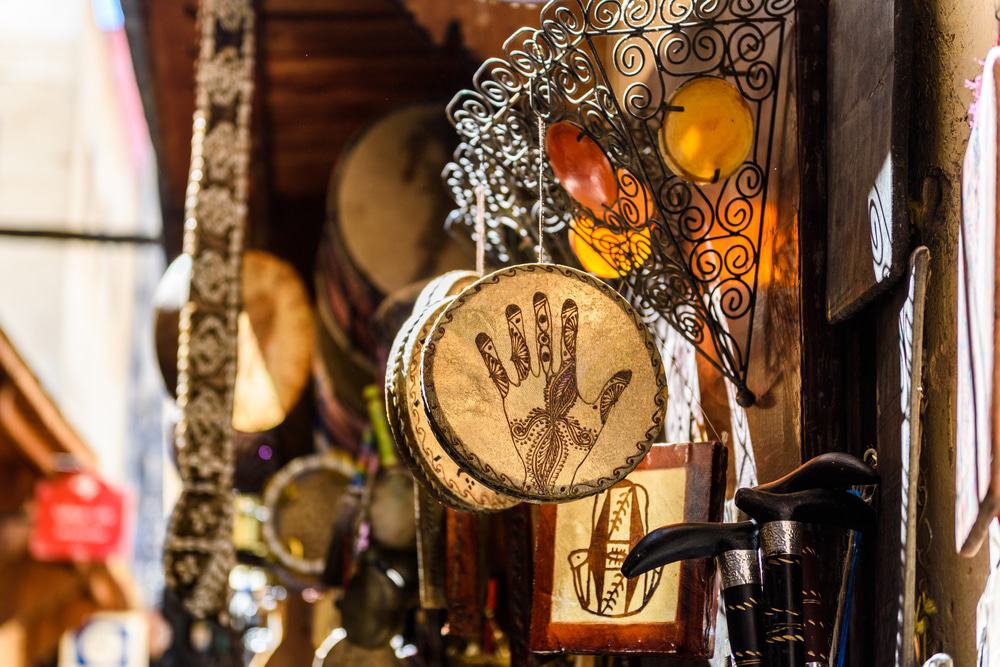
Fes Morocco Travel guide
A visit to Fes is incomplete without a trip to the local markets or souks. One of the best places to shop in the Fes medina is the Souk el Henna or the market of perfumes and henna. It derives its name from the products sold in the shops here, mostly fragrances and toiletries. You will find many varieties of cosmetics, soaps, perfumes, and rose water here. Not just these, you will also chance upon shops selling spices, pottery aphrodisiacs, ceramics, tiles, jewelry, utensils, and even bird cages. A hint of caution though, it is said that the shops at Souk el Henna can sell you magic. This may not be true, but some of the potions and medicines do have side effects that you may not want. For your own undisturbed experience, it is advised that you buy only those things which you know for sure are safe and cannot be tampered with. However, be generous to the various perfumeries here, they are known to sell some of the best fragrances in the world. Know Before You Go: Inform your licensed guide about your shopping lists and he will guide you to the right shops. Do not go into any shop on your own. Bargain. Shops here often charge exorbitant prices to tourists. Negotiate to the lowest point possible. Do not encourage shopkeepers beckoning you into their shops. You may be forced to buy something even if you do not want it. If you have children with you, they are likely to be showered with adoration and praises. This is normal in Morocco.
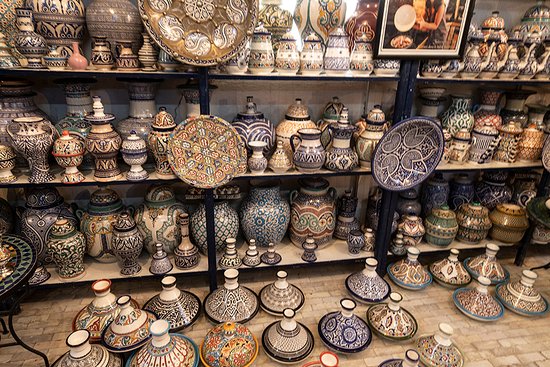
Fes Morocco Travel guide
Fes is well-famous for producing the best pottery in Morocco. The local gray clay is much more hard-wearing than many clays used further south; items made from this material are often fired at volcanic temperatures, and normally capable of withstanding a microwave or dishwasher. The pots are still painted by hand here. If you’re keen to stock up on treasures for your kitchen or dining room table, you have several options. Several stores along with Talaa Kbira stock good-quality tableware, including our favorite, the Fondouk Tazi, which also offers some lovely modern designs. Continue into the bowl of the medina to the Henna Souk to find traditional patterns such as the tomato flower, various Berber motifs, and embroidery-inspired designs. Serious buyers went up to Ain Nokbi, the industrial quarter, to see the potters at work. The shops can also organize big shipments for you, but oversee the packaging yourself if you want it to arrive intact.
Recommended tours
Review & Earn Travel Money
At TripsPoint you have endless possibilities to earn TripsPoint Money - this is your Travel Money your can use to book you next tours and activities everywhere you go.
Here's Space For Everyone
New tours